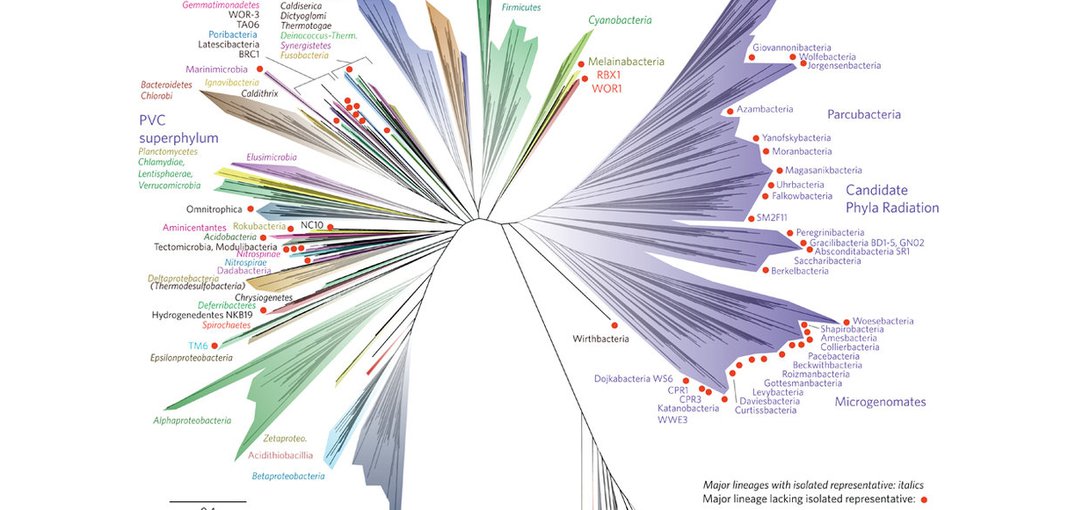Written byAaron Gronstal

Sept. 13, 2023
Research Highlight
The Evolution and Spread of Sulfur Cycling Enzymes

A current view of the tree of life, encompassing the total diversity represented by sequenced genomes.Image credit: Hug et al. (2016).
NASA-supported scientists have performed a detailed study of how genes involved in the biological sulfur cycle on Earth have evolved through time and are tied to Earth’s geological history. Life on Earth has played an important role in cycling sulfur throughout Earth’s history, and the cycling of sulfur has profound effects on our planet’s climate and redox state (the oxidation of the planet’s atmosphere and ocean).
The study provides insight into how biological cycling of sulfur evolved in tandem with the redox state of the Earth. The results suggest that the oxidation of sulfides (compounds with sulfur and one or more metals) was occurring during the Archean Eon, some 4.0-2.5 billion years ago. However, genes involving thiosulfate emerged on the tree of life after the Great Oxidation Event, roughly 2.4-2.1 billion years ago. These genes then began to appear more and more in different types of organisms. The team believes that the expansion of genes involved in biological sulfur cycling didn’t just come from one successful organism that then passed the genes on to its progeny. Instead, the team believes that the appearance of the genes throughout the tree of life was the result of rampant gene sharing across the biosphere.
“I like to use the analogy of genes “going viral,” says Rika Anderson of Carleton College in Minnesota and one of the study’s authors. “In other words, they become useful in a specific ecological context, so they are shared widely among organisms.”

Rika Anderson is an astrobiologist and oceanographer at Carleton College in Minnesota.Image credit: Rika Anderson.
The results have important implications for climate regulation on Earth, and possibly the identification of atmospheric biosignatures on other worlds.
The study, “The evolution and spread of sulfur cycling enzymes reflect the redox state of the early Earth,” was published in the journal Science Advances.